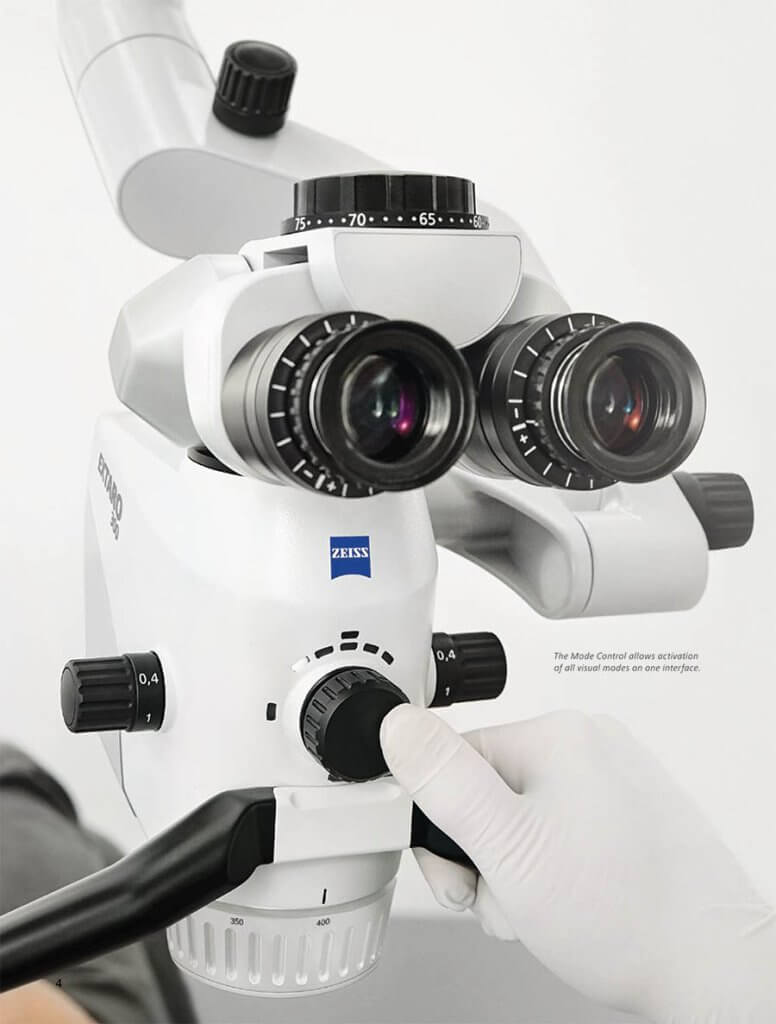Microsurgical Training Has a New Look At the Buxton Education Center
As one of the country’s leading training sites for a new generation of ophthalmic and ENT surgeons, the Jorge N. Buxton, MD, and Douglas F. Buxton, MD, Microsurgical Education Center is no stranger to advanced technology. In 2006, for example, it installed a virtual reality EyeSi Surgical Simulator to sharpen the intricate microsurgical skills trainees will soon bring to the operating room. Extensive audio-visual improvements soon followed.
The latest upgrade further elevates the educational experience for students and instructors alike. Ten of 16 training stations within the wet lab environment have been outfitted with ZEISS EXTARO 300 microscopes, each equipped with a high-resolution video camera so that faculty can view on-screen practice sessions in real-time, or later on from a remote monitor.
“These high-definition microscopes will make training much more realistic for our residents and fellows through exquisite visualization and depth perception,” says Douglas F. Buxton, MD, Clinical Professor of Ophthalmology at the Icahn School of Medicine at Mount Sinai, and son of Jorge N. Buxton, MD, the first chief of cornea service at New York Eye and Ear Infirmary of Mount Sinai (NYEE), and a champion of modern microsurgery. “In addition, cameras attached to each microscope will allow for co-observation by instructors and trainees in a way that promotes on-the-spot interaction and discussion.”
The replacement of older microscopes with the latest models—whose cost is being split by the Mount Sinai Departments of Ophthalmology, Otolaryngology and the Jorge N. Buxton, MD, and Douglas F. Buxton, MD, Microsurgical Education Foundation– are consistent with the core mission of NYEE. “The upgrade demonstrates our commitment to not just maintaining but enhancing our educational programs and the investment we continue to make in the future of our residents and fellows,” says Paul Sidoti, MD, Deputy Chair for Education, Department of Ophthalmology, Icahn Mount Sinai. “Having a microsurgical training lab with a robust simulation program is also vital to our ability to attract top candidates from across the country who look for such a capability.”
Some 30 residents will benefit each year from the enhanced training, not just ophthalmic but ear, nose, and throat. “By significantly increasing the power of illumination and magnification, the new microscopes will provide students with better and crisper images of small and fine details of structures, especially of the ear and eye,” says George Wanna, MD, Professor and Executive Vice Chair of the Department of Otolaryngology Head and Neck Surgery at Icahn Mount Sinai. “This is a huge advantage when learning general otolaryngologic procedures like tympanoplasty, myringotomy, mastoidectomy, and transoral laser surgery.”
For Dr. Buxton, the latest lab improvement is a natural fit for the Buxton Microsurgical Education Center Foundation, which he created 15 years ago. “We’re trying to create a microsurgical educational environment that is second to none in the world,” he declares. “And by allowing residents to imitate, as closely as possible the real OR surgical environment, these new enhancements are true to our mission.”


